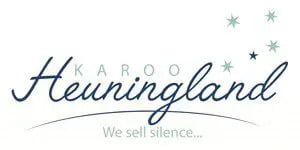
The Karoo is a vast area in southern Africa. An arid to semi-arid region, it covers parts of the Eastern Cape, Western Cape and Northern Cape provinces. In excess of 400,000 kms, the Karoo was once, 250 million years ago, a vast inland sea. Today, under the vast, wind-blown skies, the Karoo presents some perfect sheep farming areas.
The Karoo is best defined by its vegetation, which consists of assorted succulents and low scrub bushes spaced from one foot to several feet apart. Because grasses are uncommon, and the rainfall low, it is not suitable for agriculture, but has instead become a marked area for sheep farming. When hiking in the Karoo, you are bound to pass huddles of sheep. These hardy animals have become an integral part of the landscape and an important sector in the South African economy.
- Over a number of years, the sheep farming business in South Africa has proved reasonably profitable. The two main products for sheep farming are sheep meat (lamb & mutton) and wool. The lamb and mutton demand exceeds 1,90,000 tonnes per year, and there is a large export market for wool. The Karoo also produces around 50% of the world’s mohair production – from some 800,000 Angora goats.
- Merinos are a dual-purpose breed of sheep, producing excellent top-quality medium to ultra-fine wool, as well as mutton. Fortuitously, sheep thrive in a wide spectrum of grazing and climatic conditions.
- A history of the Merino sheep in the Karoo reveals that the six sheep originally sent from the Netherlands to the Cape in 1789, were a gift from the Spanish royal house to the Dutch government. In 1795 the Van Reenen brothers bought 3 rams which were the offspring of these original sheep and bred them with 300 ewes of Cape sheep, a hardy, indigenous, fat-tailed breed with no fine wool qualities. It took the Van Reenen brothers, highly successful farmers of their time, five cross-breedings to eventually produce a particular pure wool of acceptable quality, and soon after this achievement, they were able to engineer dramatic improvement in the wool quality.
- By the early 1830s, the Merino breed was well established and ready to expand from the Cape to the rest of the country. Between 1835 and 1840, some 12,000 to 14,000 mainly Dutch-speaking colonists, many of them farmers, became Voortrekkers in the Great Trek from the Cape colony northwards. Naturally, they took their sheep flocks with them. From here, the Merino breed spread to all parts of the country within a few years.
Currently, sheep farming is the economic backbone of the Karoo, with other forms of agriculture taking place in areas where irrigation is possible. Lately, game farms and tourism are also making economic impact on this fascinating area.
There are many working guest farms where you can experience the hospitality of the Karoo farmers, and the daily life of a working farm. Visit the Karoo and experience the bustle of a sheep farm for yourself. Or join one of our hiking/driving tours and see this ancient landscape in its silent splendour by day, and star-ridden skies by night. The Karoo has something interesting and special for everyone.
Heuningland: African & Karoo tours to stir the heart and lift the soul
We are proudly South African and have a fervent love of the Great Karoo, its people and its unique vegetation and animals. We are passionate conservationists of nature and would like to share our knowledge acquired through years of travel and touring experience. We are therefore able to offer custom-designed and distinctively different tour options:
- Hiking/camping trails or guided self-driving tours through the ancient landscape of the Karoo.
- Tailor-made safaris to any destination in South Africa, Namibia, Zimbabwe, Zambia, Mozambique, and Botswana.




